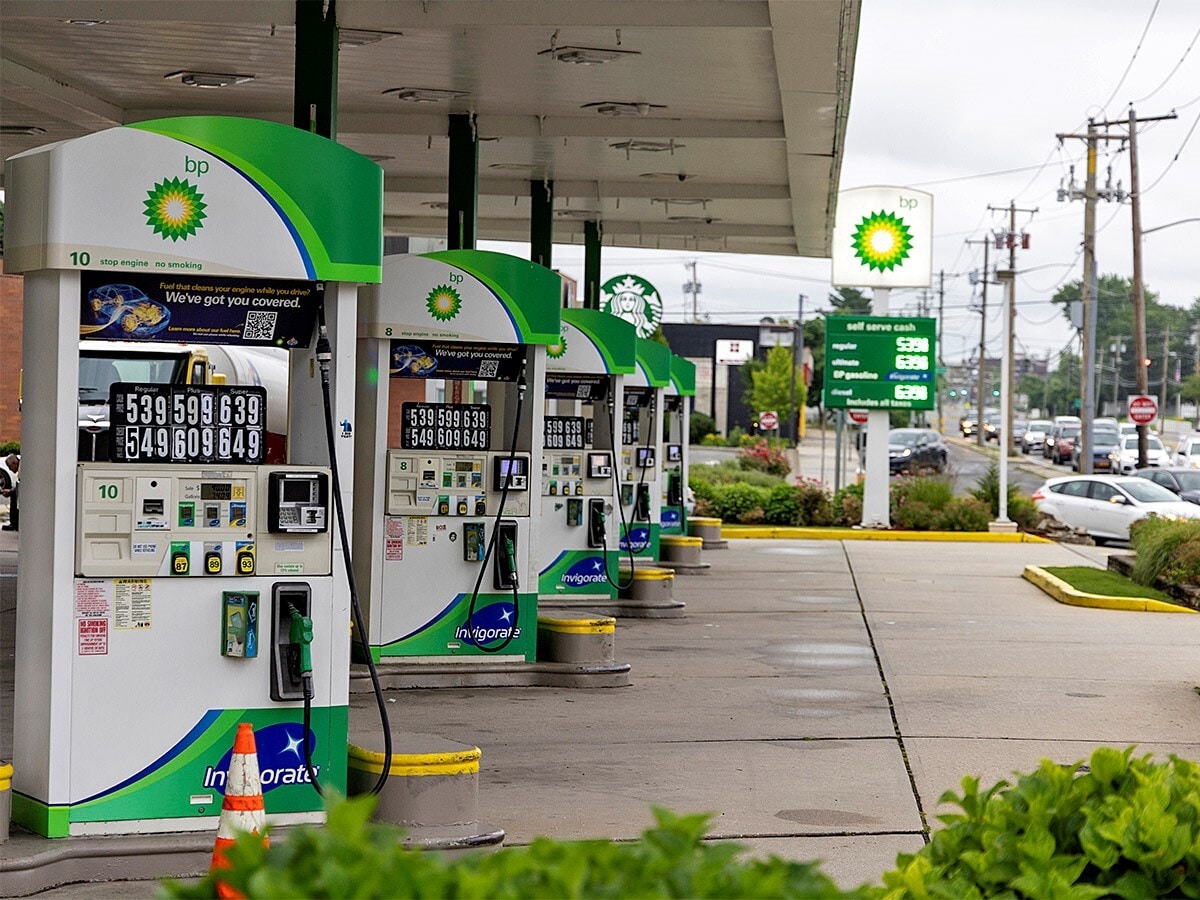A rise in wholesale gas prices after Russia invaded Ukraine helped the oil and gas giant rack up huge profits, with the share price gaining over 40% through 2022, although it has stalled in 2023. Despite upping its renewables investment, this is still exceeded by fossil fuel spend. Analysts remain positive on BP, despite the UK windfall tax.
After gaining over 40% through 202, the BP [BP.L] share price has stalled so far in 2023, but remains on a longer-term upward curve as it chases a return to the 500.00p level.
The oil and gas giant has racked up bumper profits this financial year after a rise in wholesale gas prices, fuelled by Russia’s invasion of Ukraine. However, the oil giant continues to face criticism over its transition plan, after revealing it would be spending more on fossil fuels than green energy.
Neverthesless, the FTSE 100 stock is aiming to generate 50% of its power from renewable sources by 2030, while analysts remain overwhelmingly bullish on BP shares, despite the UK government increasing the windfall tax on UK oil companies’ profits.
How’s the BP share price performing?
The London-listed BP stock price has eked out a 0.20% rise so far this year, after closing at 475.85p on Friday 20 January. This follows a stellar 43.69% gain through 2022, as BP shares continued to recover from the downturn brought on by Covid-19, and after Russia’s invasion of Ukraine began in February last year, leading to oil prices soaring to a peak of $126 a barrel last summer.
Despite the share price’s sluggish start to 2023, BP shares are only 5.66% below the 52-week high of 504.40p, reached on 4 November, and have climbed 39.30% above the 52-week low of 341.60p, recorded on 4 March.
Fossil fuel expenditure outweighs clean energy investment
BP plans to spend more on oil and gas projects than on renewable investments in 2023 and beyond, according to the Guardian, after the company revealed its spend on “resilient hydrocarbons” will rise from $9bn in 2022 to “$9bn to $10bn a year” from 2023 to 2025, which includes $7.5bn a year on oil and gas projects, compared with $3bn to $5bn a year on “low-carbon” energy projects. That figure will rise to between $4bn and $6bn a year in the second half of the decade.
BP’s investment in non-oil and gas projects, encompassing renewables, hydrogen, and bioenergy, is set to grow to over 40% of its total investment by 2025, and around 50% by 2030. Still, Mike Childs, Friends of the Earth head of policy, said: “It’s astounding that in the middle of a climate emergency, BP is planning to invest billions more dollars on planet-warming fossil fuels than on clean, green renewables.”
BP is focusing on low-carbon technologies, including hydrogen fuel cells and battery storage solutions. In September, BP completed a 40.5% investment in the Asian Renewable Energy Hub project in Western Australia, which, it says, “has the potential to be one of the largest renewables and green hydrogen hubs in the world”.
On 10 January, BP also announced a new Arche solar project is now under construction in Ohio, US, following a power purchase agreement secured with Meta [META]. BP says Arche’s renewable power could avoid more than 155,900 metric tons of greenhouse-gas emissions annually – equivalent to 34,000 fuel-burning cars. Once completed, Arche will generate enough clean energy annually to power the equivalent of more than 20,000 US homes.
Could windfall tax affect BP’s renewables investment?
In May 2022, when he was still chancellor, Rishi Sunak introduced a 25% windfall tax on North Sea oil and gas operators’ profits. The new chancellor, Jeremy Hunt, increased the rate to 35% in the autumn statement. The tax includes an investment allowance for new projects, which, says Childs, “encourages companies to invest in more gas and oil”; he argues that the government should “close the loophole”.
There’s a fear, raised by energy firms themselves, that a windfall tax on profits could harm investments in green energy. However, BP CEO Bernard Looney said in May last year that the company’s UK investments would continue as planned, and that the windfall tax would have no influence. The one caveat is that the tax was initially implemented until 2025, but it’s now been extended until 2028. However, it seems that BP still intends to invest heavily in renewable technologies.
What are analysts forecasting for BP LSE shares?
Analysts appear to be confident that BP won’t be unduly burdened by the windfall tax. Deutsche Bank analyst James Hubbard believes earnings are likely to fall in the “low-single digits”, reports Barron’s. And Morningstar strategist Allen Good pinpoints reasons for investors to be positive, saying, “2023 earnings won’t match 2022, but they’re still great. Shareholders are going to see a lot of cash flow coming back between [share] repurchases and dividends.” Barron’s Brian Swift is also optimistic, reckoning that, “for now, BP and Shell [SHEL] look like bargains”.
Among the 22 analysts offering 12-month price targets, BP stock has a median target of 548.02p, which suggests a potential upside of 15.17% compared with last week’s 475.85p close, according to the Financial Times. Underlying this, analysts polled by the FT are currently optimistic on BP’s share price prospects, with six ‘buy’, 12 ‘outperform’, and eight ‘hold’ ratings, with no ‘underperform’ or ‘sell’ ratings. Investors will be looking to BP’s full-year results announcement, scheduled for 7 February.
Disclaimer Past performance is not a reliable indicator of future results.
CMC Markets is an execution-only service provider. The material (whether or not it states any opinions) is for general information purposes only, and does not take into account your personal circumstances or objectives. Nothing in this material is (or should be considered to be) financial, investment or other advice on which reliance should be placed. No opinion given in the material constitutes a recommendation by CMC Markets or the author that any particular investment, security, transaction or investment strategy is suitable for any specific person.
The material has not been prepared in accordance with legal requirements designed to promote the independence of investment research. Although we are not specifically prevented from dealing before providing this material, we do not seek to take advantage of the material prior to its dissemination.
CMC Markets does not endorse or offer opinion on the trading strategies used by the author. Their trading strategies do not guarantee any return and CMC Markets shall not be held responsible for any loss that you may incur, either directly or indirectly, arising from any investment based on any information contained herein.
*Tax treatment depends on individual circumstances and can change or may differ in a jurisdiction other than the UK.
Continue reading for FREE
- Includes free newsletter updates, unsubscribe anytime. Privacy policy





